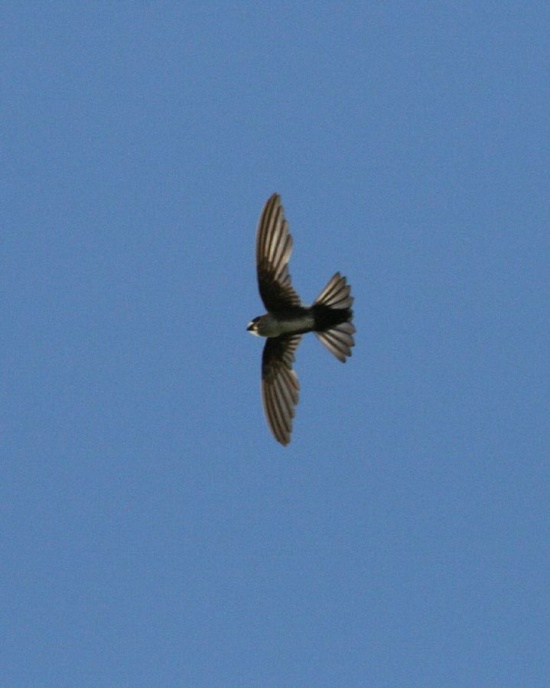(User & Incomplete templates. References given for copied text) |
|||
| Line 1: | Line 1: | ||
| + | [[Image:Antillean_Palm_Swift.jpg|thumb|550px|right|Photo by {{user|Conorbirda2|Conorbirda2}}<br>Location: Punta Cana, [[Dominican Republic]]]] | ||
;[[:Category:Tachornis|Tachornis]] phoenicobia | ;[[:Category:Tachornis|Tachornis]] phoenicobia | ||
| − | + | ||
==Identification== | ==Identification== | ||
| − | Black-and-white markings on underparts, rump, and throat. | + | Black-and-white markings on underparts, rump, and throat. <sup>[[#References|[1]]]</sup> |
==Distribution== | ==Distribution== | ||
| Line 16: | Line 17: | ||
The diet includes insects. | The diet includes insects. | ||
| − | The eggs are incubated by both parents for 18 - 21 days. The young stay in the nest for an estimated 20 - 28 days, being fed by both parents. They have 1 to 2 broods a year. | + | The eggs are incubated by both parents for 18 - 21 days. The young stay in the nest for an estimated 20 - 28 days, being fed by both parents. They have 1 to 2 broods a year. <sup>[[#References|[1]]]</sup> |
| + | |||
| + | ==References== | ||
| + | #[http://en.wikipedia.org/wiki/Antillean_Palm_Swift Wikipedia] | ||
==External Links== | ==External Links== | ||
{{GSearch|Tachornis+phoenicobia}} | {{GSearch|Tachornis+phoenicobia}} | ||
[[Category:Birds]][[Category:Tachornis]] | [[Category:Birds]][[Category:Tachornis]] | ||
Revision as of 22:37, 21 December 2008
- Tachornis phoenicobia
Identification
Black-and-white markings on underparts, rump, and throat. [1]
Distribution
Cuba, Isle of Pines, Jamaica and Hispaniola. Accidental vagrant to Florida (1 record).
Taxonomy
Polytypic. Consists of two subspecies.
Habitat
Lowlands.
Behaviour
The diet includes insects.
The eggs are incubated by both parents for 18 - 21 days. The young stay in the nest for an estimated 20 - 28 days, being fed by both parents. They have 1 to 2 broods a year. [1]




